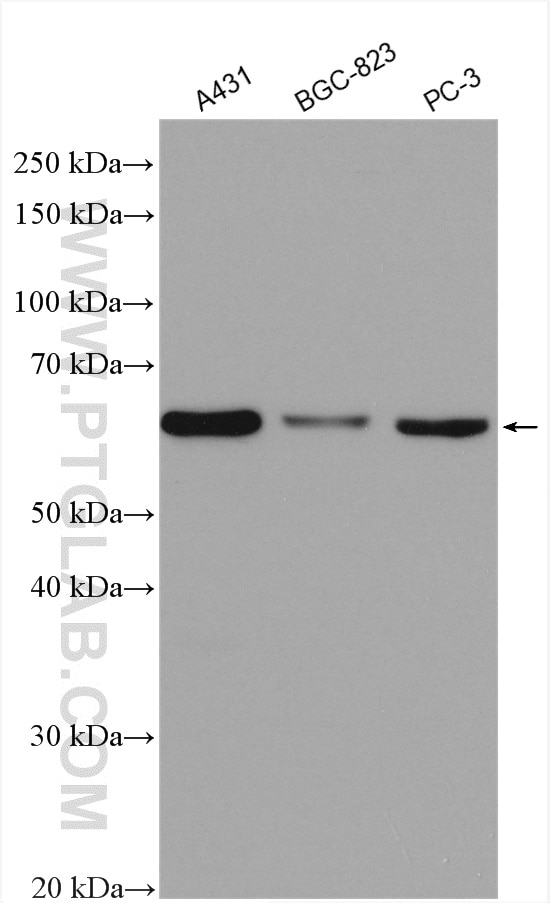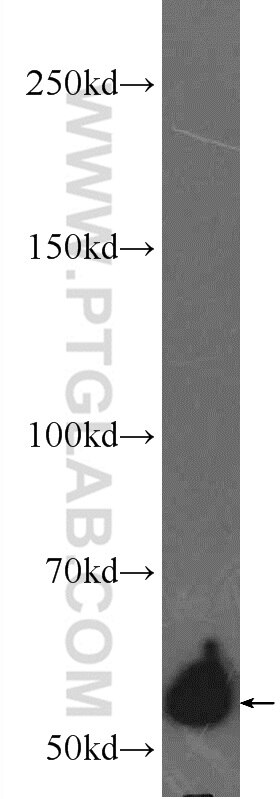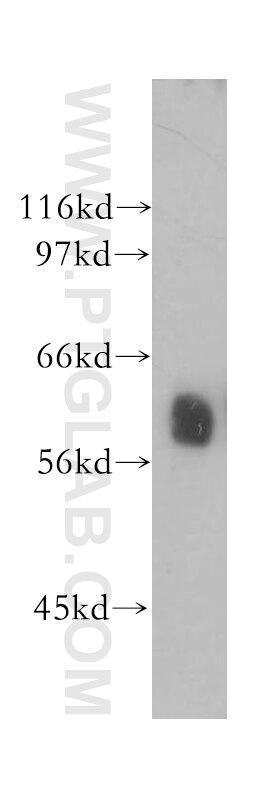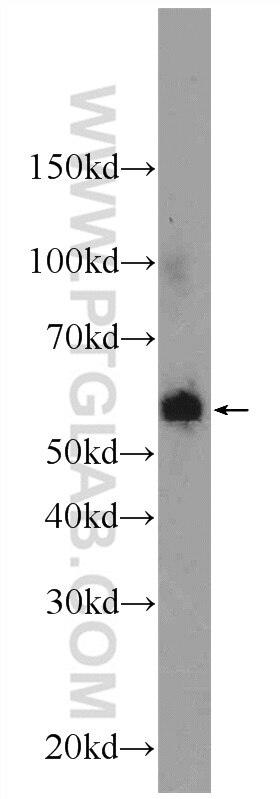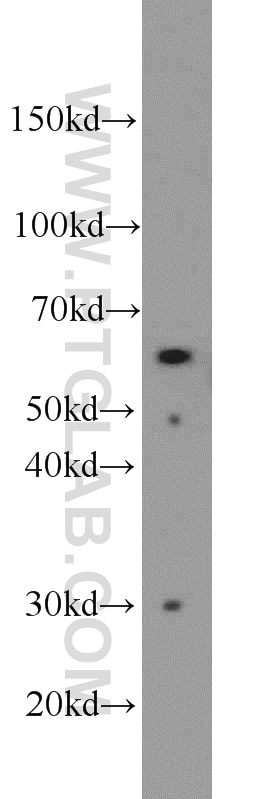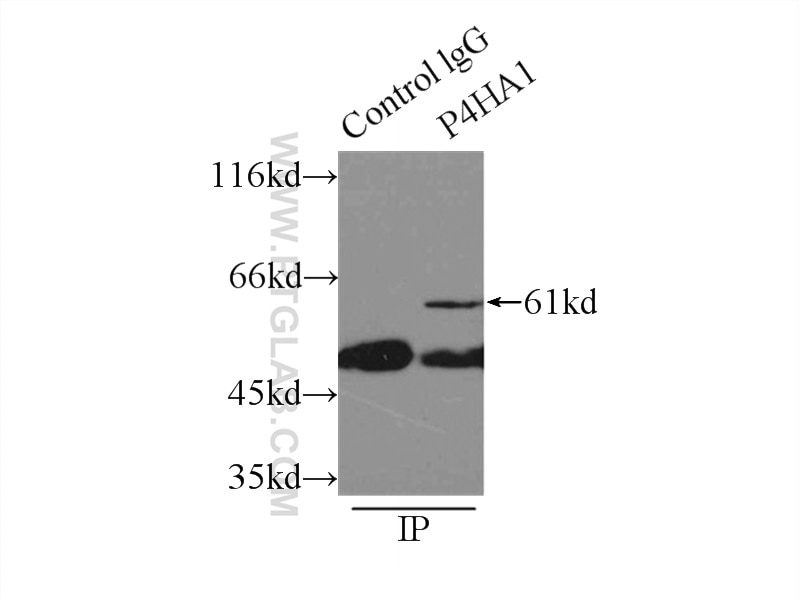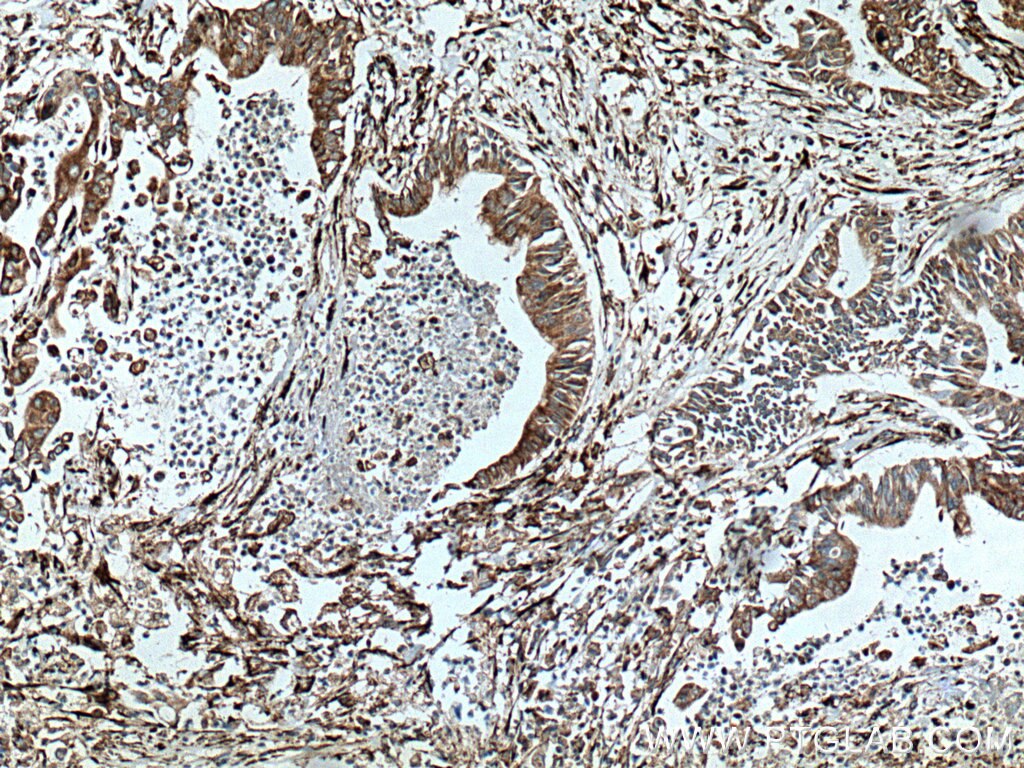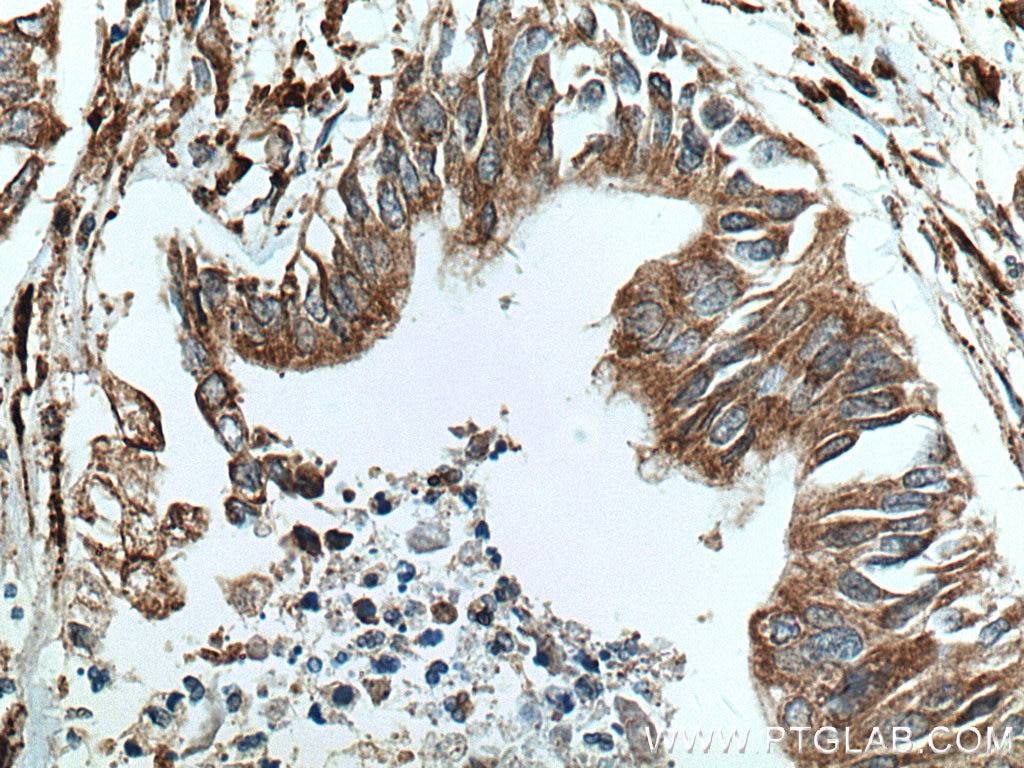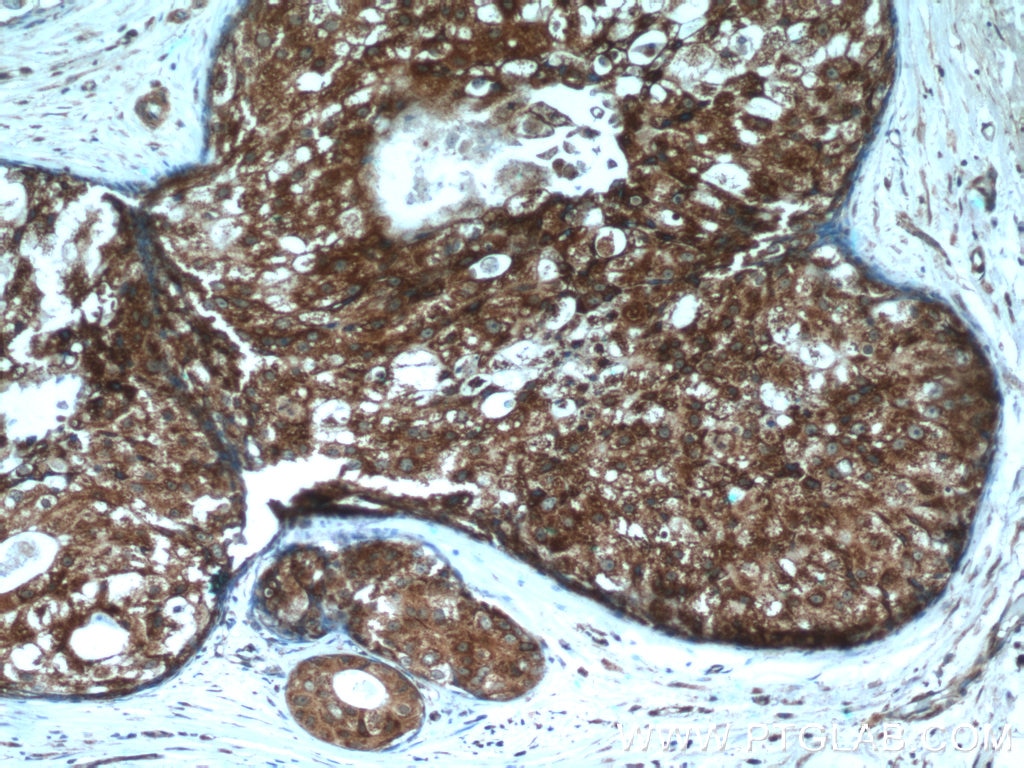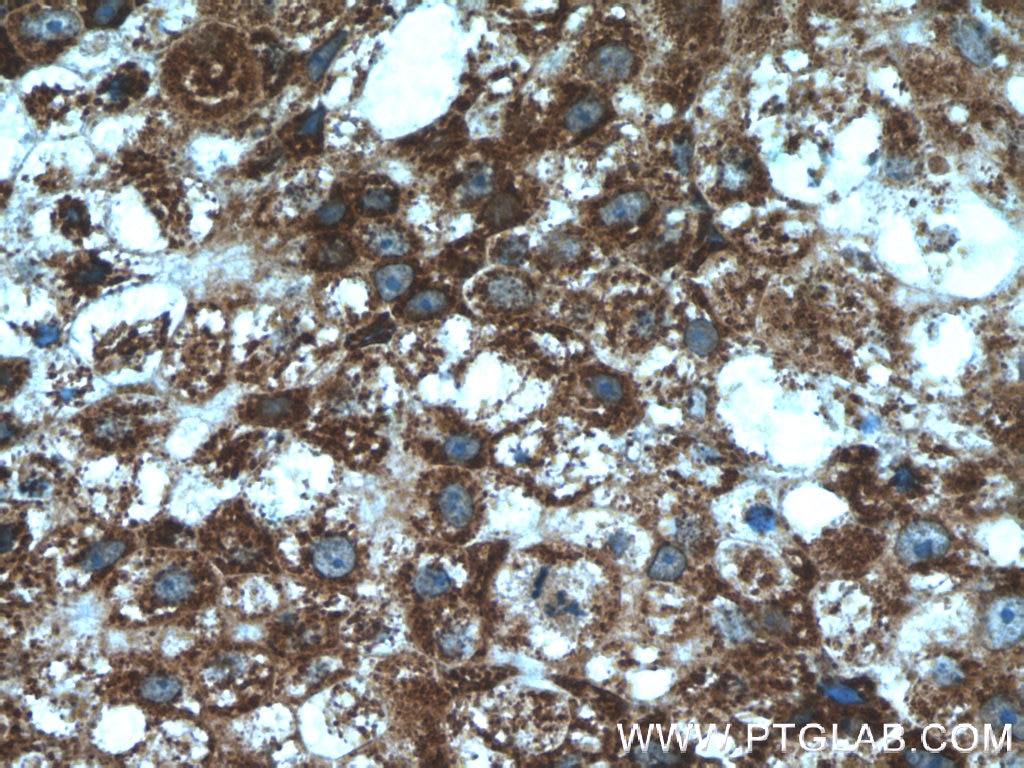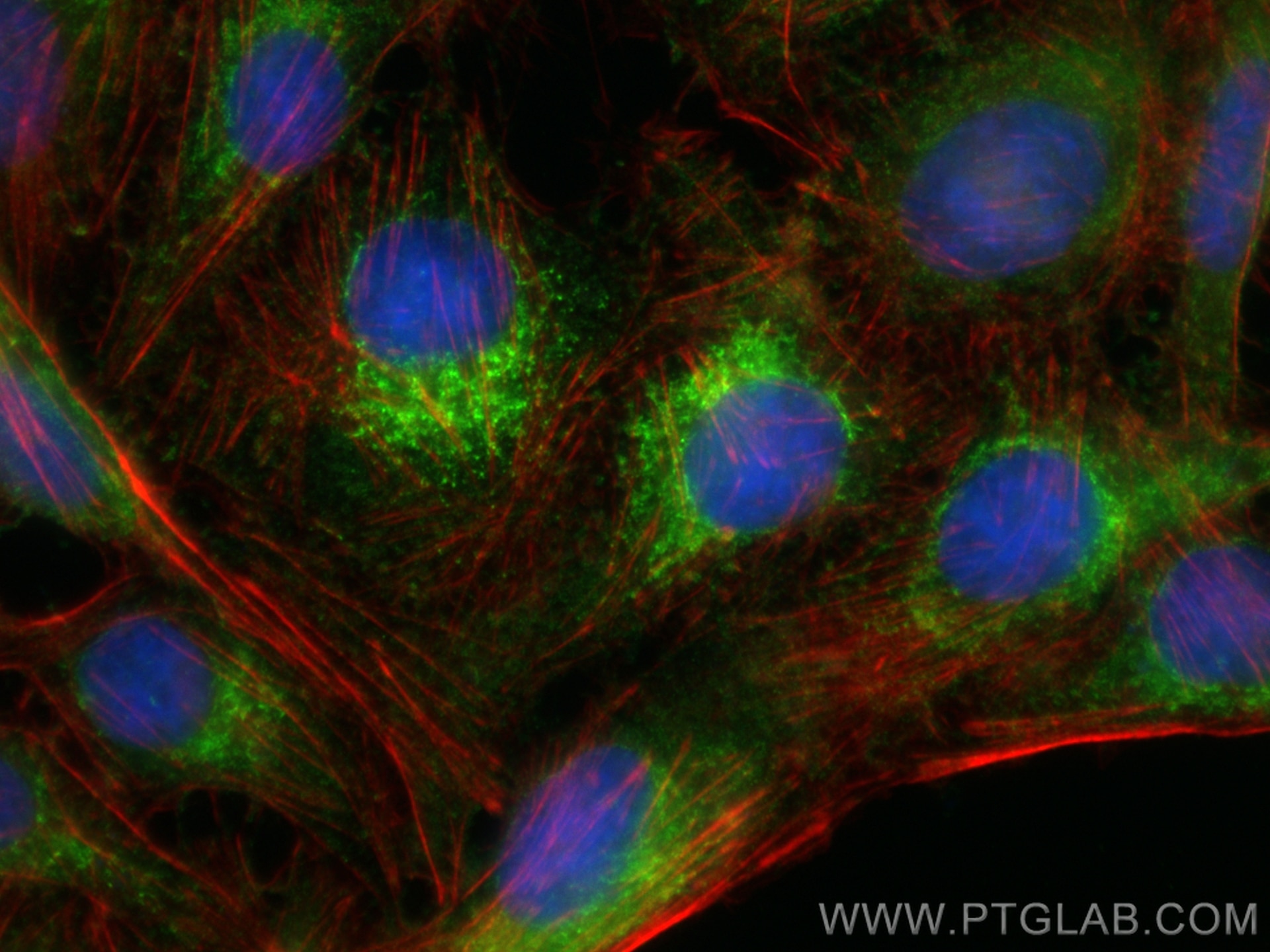- Phare
- Validé par KD/KO
Anticorps Polyclonal de lapin anti-P4HA1
P4HA1 Polyclonal Antibody for WB, IHC, IF/ICC, IP, ELISA
Hôte / Isotype
Lapin / IgG
Réactivité testée
Humain, rat, souris
Applications
WB, IHC, IF/ICC, IP, ELISA
Conjugaison
Non conjugué
N° de cat : 12658-1-AP
Synonymes
Galerie de données de validation
Applications testées
| Résultats positifs en WB | cellules A431, cellules BGC-823, cellules HT-1080, cellules NIH/3T3, cellules PC-3, tissu cardiaque humain, tissu cutané de rat |
| Résultats positifs en IP | cellules A431 |
| Résultats positifs en IHC | tissu de cancer du pancréas humain, tissu de cancer du sein humain il est suggéré de démasquer l'antigène avec un tampon de TE buffer pH 9.0; (*) À défaut, 'le démasquage de l'antigène peut être 'effectué avec un tampon citrate pH 6,0. |
| Résultats positifs en IF/ICC | cellules U2OS, |
Dilution recommandée
| Application | Dilution |
|---|---|
| Western Blot (WB) | WB : 1:2000-1:10000 |
| Immunoprécipitation (IP) | IP : 0.5-4.0 ug for 1.0-3.0 mg of total protein lysate |
| Immunohistochimie (IHC) | IHC : 1:50-1:500 |
| Immunofluorescence (IF)/ICC | IF/ICC : 1:200-1:800 |
| It is recommended that this reagent should be titrated in each testing system to obtain optimal results. | |
| Sample-dependent, check data in validation data gallery | |
Applications publiées
| KD/KO | See 9 publications below |
| WB | See 21 publications below |
| IHC | See 10 publications below |
| IF | See 3 publications below |
Informations sur le produit
12658-1-AP cible P4HA1 dans les applications de WB, IHC, IF/ICC, IP, ELISA et montre une réactivité avec des échantillons Humain, rat, souris
| Réactivité | Humain, rat, souris |
| Réactivité citée | rat, Humain, souris |
| Hôte / Isotype | Lapin / IgG |
| Clonalité | Polyclonal |
| Type | Anticorps |
| Immunogène | P4HA1 Protéine recombinante Ag3292 |
| Nom complet | prolyl 4-hydroxylase, alpha polypeptide I |
| Masse moléculaire calculée | 534 aa, 61 kDa |
| Poids moléculaire observé | 61 kDa |
| Numéro d’acquisition GenBank | BC034998 |
| Symbole du gène | P4HA1 |
| Identification du gène (NCBI) | 5033 |
| Conjugaison | Non conjugué |
| Forme | Liquide |
| Méthode de purification | Purification par affinité contre l'antigène |
| Tampon de stockage | PBS with 0.02% sodium azide and 50% glycerol |
| Conditions de stockage | Stocker à -20°C. Stable pendant un an après l'expédition. L'aliquotage n'est pas nécessaire pour le stockage à -20oC Les 20ul contiennent 0,1% de BSA. |
Informations générales
P4HA1 (Prolyl 4-hydroxylase subunit alpha-1) is also known as P4HA and belongs to the P4HA family, which plays a central role in collagen synthesis. P4HA1 catalyzes the post-translational formation of 4-hydroxyproline in -Xaa-Pro-Gly- sequences in collagens and other proteins. The gene encodes a polypeptide of 517 amino acid residues and a signal peptide of 17 amino acids and the full length protein has two glycosylation sites (uniprot). It can exist as a heteromer, dimer or tetramer (refer to: GENATLAS). P4HA1 has some isoforms with the MW 61-63 kDa and 57-59 kDa.
Protocole
| Product Specific Protocols | |
|---|---|
| WB protocol for P4HA1 antibody 12658-1-AP | Download protocol |
| IHC protocol for P4HA1 antibody 12658-1-AP | Download protocol |
| IF protocol for P4HA1 antibody 12658-1-AP | Download protocol |
| IP protocol for P4HA1 antibody 12658-1-AP | Download protocol |
| Standard Protocols | |
|---|---|
| Click here to view our Standard Protocols |
Publications
| Species | Application | Title |
|---|---|---|
Cell Death Differ Developmental growth plate cartilage formation suppressed by artificial light at night via inhibiting BMAL1-driven collagen hydroxylation | ||
J Exp Med IL-17-induced HIF1α drives resistance to anti-PD-L1 via fibroblast-mediated immune exclusion. | ||
Oncotarget The miR-124-prolyl hydroxylase P4HA1-MMP1 axis plays a critical role in prostate cancer progression.
| ||
Mol Oncol Prolyl 4-hydroxylase subunit alpha 1 (P4HA1) is a biomarker of poor prognosis in primary melanomas, and its depletion inhibits melanoma cell invasion and disrupts tumor blood vessel walls.
| ||
Aging (Albany NY) Identification of a novel glycolysis-related gene signature for predicting the prognosis of osteosarcoma patients.
|
